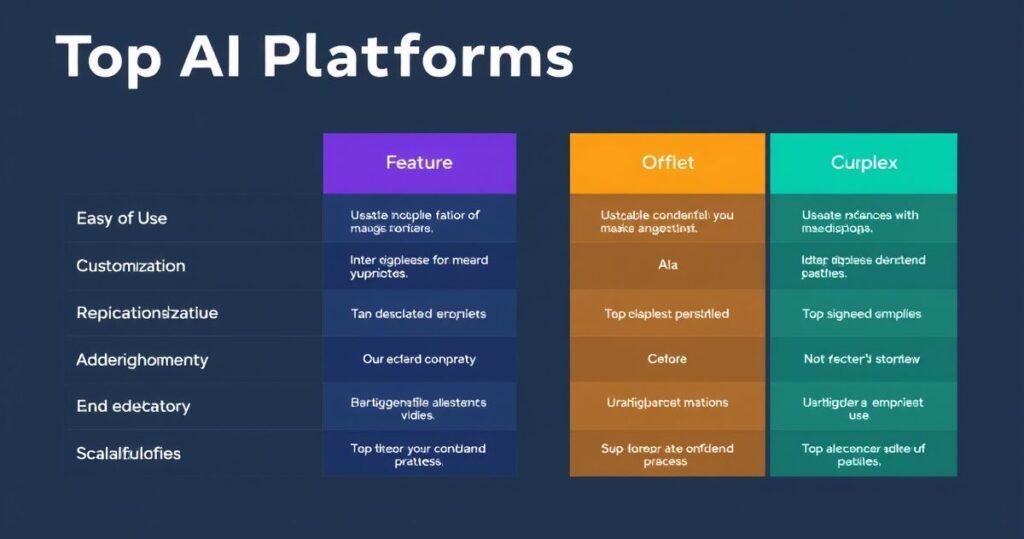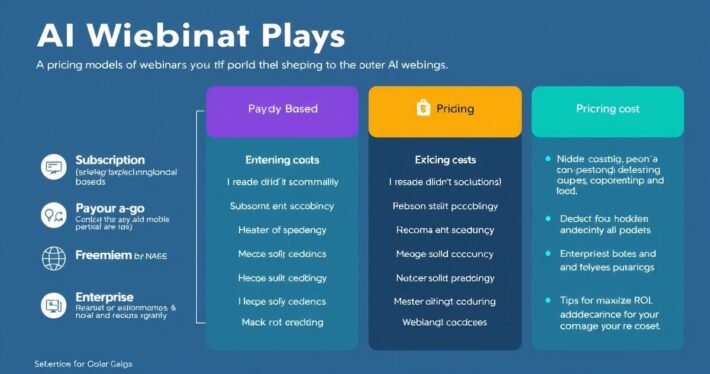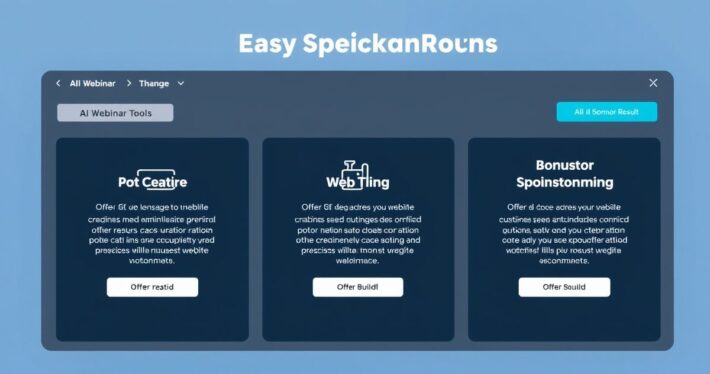Feature comparisons: Picking the best AI platform for your needs.

Feature Comparisons: Picking the Best AI Platform for Your Needs
Selecting the right AI platform can feel like navigating a maze—every turn brings a new option, and the stakes are high. Whether you’re building AI-powered tools, automating workflows, or creating personalized solutions, the platform you choose can make or break your success. But how do you sift through the noise and find the perfect fit? In this guide, we’ll break down the key features, compare top platforms, and provide actionable advice to help you make an informed decision.
Let’s start with the basics: not all AI platforms are created equal. Some excel in natural language processing (NLP), while others shine in computer vision or predictive analytics. Your choice depends on your specific use case, budget, and technical expertise. So, what factors should you consider?
Understanding Your Needs: The First Step
Before diving into feature comparisons, it’s crucial to define your goals. Are you developing a chatbot, analyzing large datasets, or creating AI-powered content? Your needs will dictate the features you prioritize. For instance, if you’re in e-commerce, you might value recommendation engines and customer segmentation tools. If you’re in healthcare, AI platforms with robust data security and compliance features will be non-negotiable.
Let’s be honest: the AI space is crowded, and the marketing jargon can be overwhelming. But here’s the secret—focus on functionality, not buzzwords.
Key Features to Compare
When evaluating AI platforms, these features should be at the top of your checklist:
-
Ease of Use
Not everyone is a data scientist, and that’s okay. Platforms like OpenAI and Google’s Vertex AI are known for their user-friendly interfaces, making them accessible to non-technical users. -
Customization
Can you tweak the platform to fit your specific needs? Customization is key for businesses with unique workflows or niche industries. -
Integration Capabilities
Does the platform play well with your existing tools? Look for APIs, SDKs, and compatibility with popular software like Salesforce, HubSpot, or Zapier. -
Scalability
Will the platform grow with your business? Scalability is critical if you’re planning to expand your AI initiatives. -
Cost
Pricing models vary widely—some charge per API call, while others offer subscription plans. Be sure to factor in long-term costs, not just the upfront price. -
Support and Community
Does the platform offer robust support? A strong community forum or dedicated customer service can save you hours of frustration.
Top AI Platforms Compared
To help you narrow down your options, here’s a side-by-side comparison of some of the most popular AI platforms:
| Feature | OpenAI (ChatGPT) | Google Vertex AI | Amazon SageMaker | IBM Watson |
|---|---|---|---|---|
| Ease of Use | High | Medium | Medium | Low |
| Customization | Moderate | High | High | High |
| Integration | Excellent | Excellent | Excellent | Good |
| Scalability | High | High | High | Medium |
| Cost | API-based | Subscription | Pay-as-you-go | Expensive |
| Support | Community-driven | Excellent | Good | Excellent |
Real-World Example: Choosing the Right Platform
Let’s look at a practical example. Imagine you’re a SaaS company developing a chatbot to handle customer inquiries. You need a platform that’s easy to integrate with your CRM, scalable to handle thousands of users, and capable of understanding complex queries.
Here’s how you might approach this:
- OpenAI (ChatGPT): Great for NLP but may lack customization for your CRM integration.
- Google Vertex AI: Offers robust integration with Google Workspace and other tools but requires more technical expertise.
- Amazon SageMaker: Highly customizable and scalable but comes with a steeper learning curve.
- IBM Watson: Excellent for enterprise-level solutions but can be cost-prohibitive for smaller businesses.
In this scenario, Google Vertex AI or Amazon SageMaker might be the best fit, depending on your team’s technical skills and budget.
Common Pitfalls and How to Avoid Them
Even with a clear understanding of your needs, there are common mistakes to watch out for:
- Overestimating Your Needs: Don’t pay for features you won’t use.
- Underestimating Complexity: Make sure the platform aligns with your team’s skill level.
- Ignoring Long-Term Costs: Factor in scalability and future needs.
Here’s a pro tip: start small. Test the platform with a pilot project before committing to a long-term plan.
The Future of AI Platforms
As AI technology evolves, so do the platforms. Expect to see more specialized solutions catering to specific industries, like healthcare, finance, and retail. Also, keep an eye on emerging trends like generative AI and edge computing.
Now, here’s where it gets interesting: the best AI platform isn’t always the most expensive or feature-rich. It’s the one that aligns with your goals, fits your budget, and grows with your business.
Actionable Advice for Decision-Making
- Define Your Priorities: List your must-have features.
- Test Before You Commit: Use free trials or pilot projects.
- Seek Expert Opinions: Consult with colleagues or industry experts.
- Plan for the Future: Choose a platform that can scale with your needs.
Final Thoughts
Choosing the right AI platform is a blend of art and science. It requires a clear understanding of your needs, a keen eye for detail, and a willingness to experiment. By focusing on functionality, scalability, and your long-term goals, you’ll find a platform that not only meets your needs but also drives your business forward.
So, which platform will you choose? The answer lies in your unique requirements and vision. Start your journey today, and let the power of AI transform your business.



